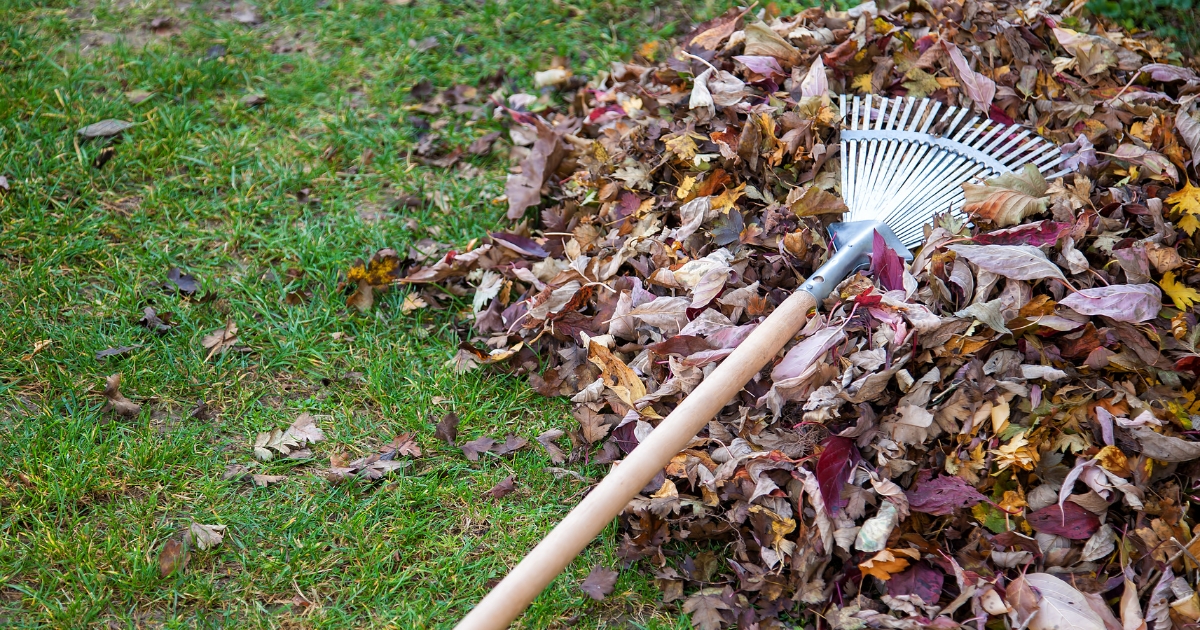
Category: Cooperative Extension

Leave the leaves: Tips for sustainable fall lawn care
October 26, 2023 Written by Sue Barton, Professor and Extension Specialist Ornamental Horticulture
Everyone has their favorite season, and mine is fall (except for the fact that it means winter is next). Crisp mornings and colorful leaves are part of this wonderful season. Those colorful leaves have already started falling, and to many, that means it is time to get out the rakes and leaf blowers. There is also a “clean up” task looming over gardeners’ heads to clean up perennial plants and get your garden ready for winter. Guess what? It doesn’t have to be that way.
One of the most valuable practices that supports pollinators, butterflies, beneficial insects, and small vertebrates is to provide winter cover in the form of fall leaves and standing dead plants. Unfortunately, we have been programmed to clean up the garden each fall, raking up leaves and cutting back the tops of perennials. These practices are not completely wrong—it is important to remove leaves from the lawn because they exclude light, and turfgrass needs light to grow. It is also useful to remove the dead perennial foliage so new sprouts can come up next spring without being hindered by old dead stems and leaves.
This system of allowing leaves and perennials to remain all winter and into the spring mimics the natural functioning of an ecosystem.
By continuing to mow the lawn periodically during the fall, you remove those leaves by chopping them up and letting the nutrients in the leaves eventually make their way back into the soil for use next year. By leaving perennial stems and flower heads up during the winter, you provide food for birds (coneflower seeds are nutritious bird food), and you make the “clean-up” job much easier in the spring after winter rain, ice and snow have beaten down the foliage, stems and flower heads. In many cases, there is no removal required. Only remove diseased plants in the fall.
We all know about the great monarch migration to Mexico, but that is not the norm for butterflies. Most butterflies and moths overwinter in the landscape either as eggs, caterpillars, chrysalises or adults. These insects use the leaf litter for winter cover. Great spangled fritillary, Luna moths, Baltimore checkerspot butterflies, and woolly bear caterpillars tuck themselves into a pile of leaves for protection from cold weather and predators. Red-banded hairstreaks lay their eggs on fallen oak leaves, which become the first food of their caterpillars when they emerge. Luna moths and swallowtail butterflies disguise their cocoons and chrysalis as dried leaves, blending in with the real leaves. Pithy and hollow stems of plants offer a safe winter environment for many native bees, butterflies, and other beneficial insects. These are but a few of countless examples.

If you really want to be friendly to your local insects, simply rake or blow leaves off the lawn and into landscape beds. Whole leaves provide better cover and will decompose more slowly. If your lawn is large and you don’t have enough area in landscape beds to accept all those leaves, build a compost pile. Or better yet, consider reducing the size of your lawn and adding beds of native plants to support native wildlife.
Leaves in your landscape beds are good for many reasons. Make sure the leaf layer is at least two inches thick to get the full benefit. Leaves will decompose naturally and provide valuable organic matter to build up healthy soil. They support the many forms of microorganisms that live in the soil. These microorganisms are, for the most part, beneficial, helping decompose organic matter and combating disease. A layer of leaves has the same weed suppression and moisture retention properties of shredded wood mulch – and they are free. A thick layer of leaves provides insulation against cold weather and can protect newly planted perennials when frost-heave may expose tender roots. Anyone who has spotted fragile spring ephemerals popping up in the woods knows that all but the frailest of plants will burst through the leaf litter in spring without trouble. As perennials emerge, you can brush the leaves aside and give them room to expand. As your plants grow and beds fill in, they will cover the leaf mulch. But, the mulch will still be there to provide water retention, weed suppression, and compost for the upcoming season.
This system of allowing leaves and perennials to remain all winter and into the spring mimics the natural functioning of an ecosystem. Forests, where leaves fall, blanket the ground and decompose each year, have rich soil and support lots of wildlife. Allow your suburban landscape to function like a forest ecosystem. Don’t throw away one of the environment’s best resources by sending leaves away each fall!
